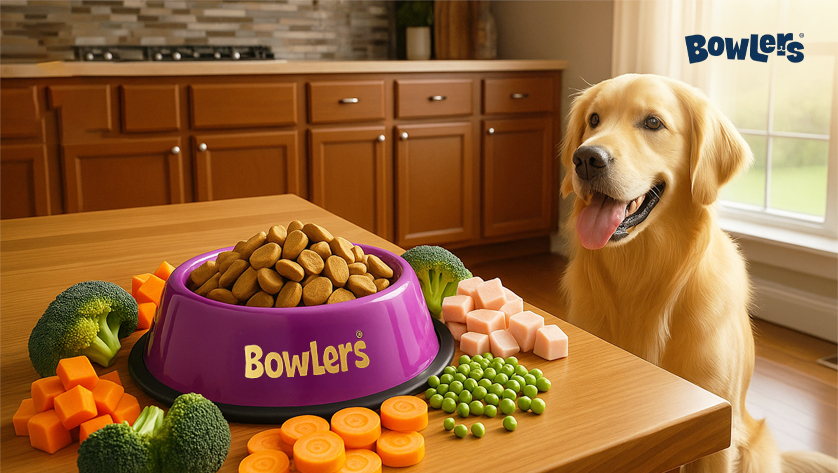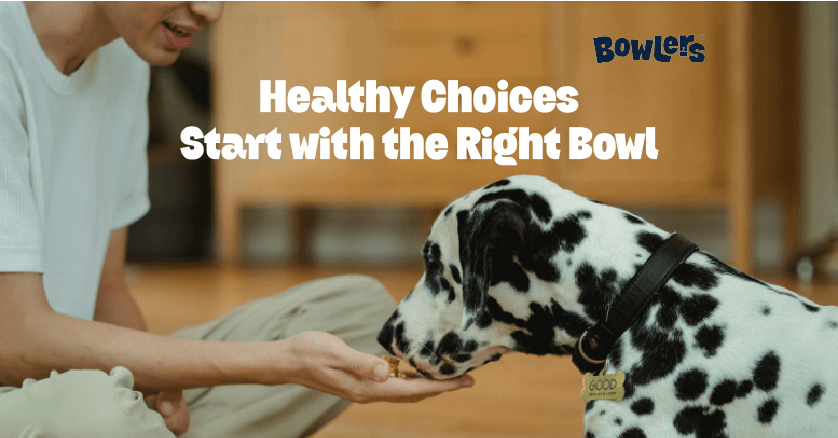Common Mistakes to Avoid When Switching Dog Food

Table of contents
- Why Switching Dog Food Needs Care
- Mistake 1: Switching Dog Food Too Quickly
- Mistake 2: Ignoring Ingredient Differences
- Mistake 3: Not Monitoring for Digestive Upset
- Mistake 4: Changing Too Many Things at Once
- Mistake 5: Ignoring Your Dog’s Preferences
- How to Transition Dog Food Without Upset Stomach
- The Role of a Balanced Daily Dog Diet
- FAQs on Switching Dog Food
Switching your dog’s diet can be a great step toward improving their health, but if not done correctly, it can cause digestive upset, stress, and wasted effort. Whether you’re moving to a more healthy daily dog food option or simply trying a new flavor, the process matters as much as the product.
Here, we will break down the most common mistakes when switching dog food, explain how to transition smoothly, and share expert tips to keep tails wagging and tummies happy.
Why Switching Dog Food Needs Care
Dogs have sensitive digestive systems. Any sudden change in ingredients whether protein source, fat content, or fiber levels can disrupt the balance of gut bacteria. This can lead to diarrhea, vomiting, loss of appetite, or other symptoms that make the change more stressful for both you and your dog.
Following the gradual dog food change timeline (7-10 days) helps your dog’s digestive system adapt to the new food without unnecessary discomfort.
Mistake 1: Switching Dog Food Too Quickly
The Problem:
One of the most common issues is rushing the transition. Dogs that are switched overnight often show switch dog food too quickly symptoms such as loose stools, gas, and refusal to eat.
The Fix:
Use a new dog food mixing ratio guide to blend old and new food gradually:
- Days 1-2: 75% old food, 25% new food
- Days 3-4: 50% old food, 50% new food
- Days 5-6: 25% old food, 75% new food
- Days 7-10: 100% new food
This slow approach minimizes digestive upset and helps your dog accept the new flavor and texture.
Mistake 2: Ignoring Ingredient Differences
The Problem:
Every dog food has its own formula. Even if two products look similar on the label, their ingredient differences when switching dog food such as protein source, fat content, or fiber type can affect digestion.
The Fix:
Read labels carefully. Compare:
- Protein source: Chicken, lamb, fish, etc.
- Carbohydrate source: Rice, oats, sweet potato, etc.
- Fiber content: Too much or too little can cause loose stools or constipation.
- Additives: Artificial colors, flavors, and preservatives may trigger allergies or sensitivities.
Choosing a food with similar key ingredients to the old diet can make the transition easier.
Mistake 3: Not Monitoring for Digestive Upset
The Problem:
Some pet parents assume a little diarrhea during the switch is “normal” and ignore it. However, persistent loose stools, vomiting, or loss of appetite can signal a serious reaction to the new food.
The Fix:
Watch for these symptoms of digestive upset when changing dog food:
- Diarrhea lasting more than 48 hours
- Vomiting more than once
- Refusal to eat or drink
- Excessive gas or bloating
If you notice any of these, slow the transition or consult your vet.
Mistake 4: Changing Too Many Things at Once
The Problem:
If you change the food brand, introduce new treats, and alter mealtime routines at the same time, you won’t know which change is causing any problems.
The Fix:
Stick to one change of dog food. Keep treats and feeding schedules consistent until your dog is fully adjusted.
Mistake 5: Ignoring Your Dog’s Preferences
The Problem:
Even the best dog food brands may not suit every dog’s taste. Forcing a food your dog dislikes can lead to reduced appetite and nutritional gaps.
The Fix:
Choose a food that aligns with both your dog’s health needs and their taste preferences. Look for dog food recommendations from your vet or try small sample packs before committing to a large bag.
How to Transition Dog Food Without Upset Stomach
To avoid digestive upset when changing dog food, follow these tips:
- Stick to the 7-10 day gradual change.
- Mix new food thoroughly with old food to avoid selective eating.
- Feed at the same time each day to help digestion stay regular.
- Keep fresh water available at all times.
The Role of a Balanced Daily Dog Diet
Switching dog food is an opportunity to improve your pet’s nutrition. A balanced daily dog diet should include:
- High-quality protein for muscle maintenance
- Healthy fats for energy and coat health
- Digestible carbohydrates for sustained energy
- Vitamins and minerals for immune support
If you are upgrading to a healthy dog food, you may notice shinier coats, more energy, and better digestion once the transition is complete.
Switching your dog’s food can improve their health but only if done thoughtfully. Avoiding these common mistakes when switching dog food will help your pet adjust without stress or discomfort. Follow the gradual dog food change timeline, monitor their digestion, and choose a food that is both safe and nutritious
FAQs on Switching Dog Food
1. How long should I take to switch dog food?
A gradual switch over 7-10 days is ideal to minimize digestive upset.
2. What happens if I switch too quickly?
You may see diarrhea, vomiting, or refusal to eat due to the sudden change.
3. Can I change my dog’s food without mixing?
It is not recommended unless under veterinary advice. Sudden changes can cause stomach upset.
4. Should I change treats at the same time as food?
No. Keep treats consistent during the transition to identify any food related issues.
5. What if my dog refuses the new food?
Mix in small amounts of the new food with something your dog enjoys, or consult your vet for alternative dog food recommendations.


